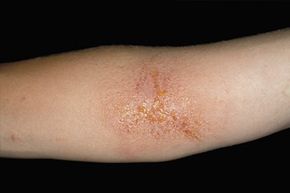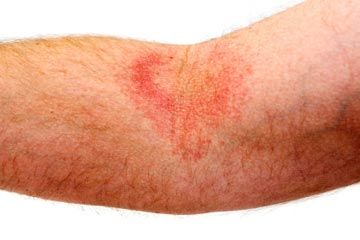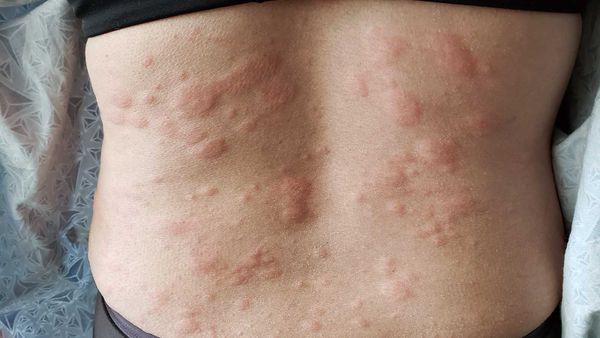If you have an inflamed, itchy, red rash that burns, it could be contact dermatitis. Contact dermatitis (a type of eczema) is usually a rash caused when someone rubs against plants such as poison ivy or uses products with ingredients containing possible allergens, such as certain laundry detergents or soaps, cleaning chemicals or latex gloves.
There are two categories of contact dermatitis -- irritant and allergic. Irritant contact dermatitis happens when a chemical or other harsh substance damages the upper layer, or epidermis, of the skin, resulting in burns, blisters and skin ulcers. Almost any substance or environmental element can cause irritant contact dermatitis over a long enough period of time for people who have very sensitive skin -- even dry or warm air and humidity can cause it [source: Hogan]. Irritant contact dermatitis could be life threatening if the condition is untreated and leads to serious infection.
Advertisement
Unlike irritant dermatitis, allergic contact dermatitis happens when a person's skin comes in contact with something he or she is, well, allergic to. An allergen causes your immune system to have an exaggerated reaction when it comes in contact with a substance. Instead of finding a substance harmless, your immune system considers the substance dangerous and responds appropriately. Sometimes, it may take years and many exposures for a person to react to a certain allergen, such as soap or an ingredient in a moisturizer [source: Mayo Clinic].
Once the allergens enter the top layer of skin, they combine with natural skin proteins. White blood cells then transport the allergen-protein combination through the body. Because your immune system has a "memory," the next time you touch that particular allergen, your body will recognize it -- and react to it. Itching, pain and inflammation are all signs that your body is reacting to some allergen [source: CCOHS].
The good news is that contact dermatitis isn't fatal and should not be contagious. Although, with the itching and burning, it can certainly be rather unpleasant [source: Mayo Clinic]. Of course, there's always a chance that the allergen will cause other reactions, such as swelling of the mouth and airways, which can be life-threatening. If this happens, you should seek immediate medical attention.
Keep reading to learn more about irritant and allergic contact dermatitis.
Advertisement


